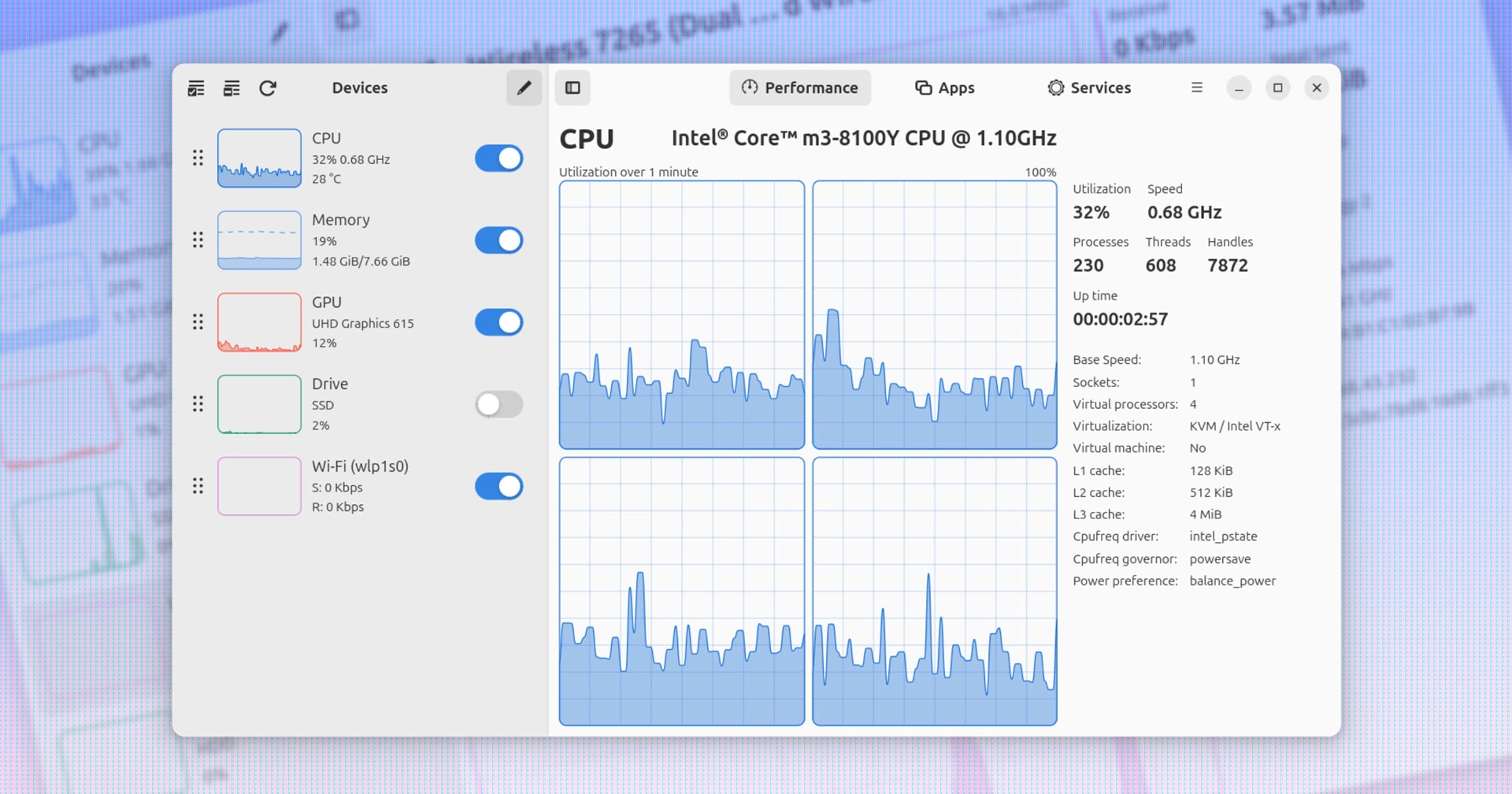A significant new version of Mission Center, a contemporary system monitor application for Linux desktops, has been unveiled.
Supporters of this Rust-based GTK4/libadwaita system monitoring application (which, to address a common topic, features a user interface that I would argue is superior to the Windows system monitor tool) will discover plenty to appreciate in the most recent update.
In this post, I won’t go over all the existing features of this tool since I’ve discussed it several times before. For those who are new to it, the Mission Center homepage provides more information.
Instead, I will concentrate on the new changes in the latest version, which was released over the weekend.
Mission Center 0.6: What’s New?
Mission Center 0.6.0 introduces a new Fan page. This page serves a specific purpose: it displays the names of contributors and supporters—wait, there’s more; the fan page actually monitors system fans and provides details about their RPM, PWM, and temperature metrics (when applicable).
Unfortunately, I can’t share a screenshot of the new Fan page since none of my laptops can report that data to the system. According to the merge request, System76 laptops and ThinkPads provide the best capability for transmitting those stats, though other brands may have varying levels of support.
You now also have the option to conceal devices from the sidebar.
Have you ever wanted to hide or rearrange hardware in the Performance sidebar? Now it’s possible! If you’re not interested in the disk activity of internal disks that you’re not booted from, or if there’s no need to view the flatline activity of an idle ethernet port, you can simply toggle them off.
Mission Center 0.6 brings a fresh look to the Memory page to “convey more information”. Committed memory is now represented on the real-time graph (appearing as a dashed line), while swap memory now has its own separate graph box, allowing you to visualize its usage—or hopefully, the lack thereof.
The GPU page has been enhanced to better illustrate which GPU features are being monitored. With Mission Center 0.6.0, GTT usage for discrete AMD GPUs and integrated GPUs (where supported) can be seen both as a numerical reading in the stats section and as a dashed line on the GPU memory graph.
Curious about the total data your system has consumed since your last login? The Network page now provides total data transfer statistics for the current session or since the network connection was established, in case of any changes after logging in.
Here are some additional updates:
zenpowernow supports monitoring AMD CPU temperature- Increased device type compatibility on the Network page
- Ability to display network data transfer information in bytes instead of bits
- Application icons are now shown for processes linked to known applications
- Enhanced GPU support and detection with updated NVTOP
- CPU frequency governor and power mode are hidden if unsupported
- Graph labels are now more consistent across different pages
- About and Preferences dialogs have been upgraded to use AdwDialog
- Addressed memory leaks occurring during app/process filtering
- Resolved CPU usage spikes when applications are first launched
- Utilizing GNOME (47) runtime in all supported package formats
- Initial support for Snap package introduced
While my hardware isn’t the most advanced to fully display many of Mission Center’s capabilities, the basic features available with my older technology are significantly easier to assess and monitor with this system monitor compared to others.
While featuring a sleek and contemporary design, this app effectively presents a wealth of information. In many ways, it functions as a system resource monitor, service manager, and a tool for hardware information, but it manages to maintain a user-friendly and accessible feel despite that extensive functionality.
Get Mission Center
Mission Center is open-source software available for a variety of popular Linux distributions at no cost.
You can download the latest stable version of Mission Center on Flathub. An official Snap build is currently under review, and for those who prefer a portable all-in-one solution, you can obtain an AppImage from the releases page on the Mission Center Gitlab.
Thank you, QwertyC!
